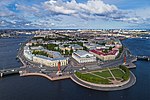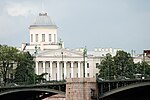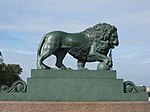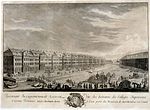Kunstkamera
1727 establishments in the Russian EmpireAnthropology museumsBaroque architecture in Saint PetersburgEthnographic museums in Saint PetersburgInstitutes of the Russian Academy of Sciences ... and 7 more
Medical museums in RussiaMuseums established in 1727Museums established in 1879Natural history museums in RussiaNatural history museums in Saint PetersburgScience museums in Saint PetersburgUniversitetskaya Embankment

The Kunstkamera (or Kunstkammer; Russian: Кунсткамера) is the first museum in Russia. Established by Peter the Great and completed in 1727, the Kunstkammer Building hosts the Peter the Great Museum of Anthropology and Ethnography (Russian: Музей антропологии и этнографии имени Петра Великого Российской академии наук), with a collection of almost 2,000,000 items. It is located on the Universitetskaya Embankment in Saint Petersburg, facing the Winter Palace.
Excerpt from the Wikipedia article Kunstkamera (License: CC BY-SA 3.0, Authors, Images).Kunstkamera
University Embankment, Saint Petersburg
Geographical coordinates (GPS) Address Phone number Website External links Nearby Places Show on map
Geographical coordinates (GPS)
| Latitude | Longitude |
|---|---|
| N 59.941666666667 ° | E 30.304444444444 ° |
Address
Музей антропологии и этнографии имени Петра Великого Российской Академии наук (Кунсткамера)
University Embankment 3 литБ
199034 Saint Petersburg (округ № 7)
Saint Petersburg, Russia
Open on Google Maps











